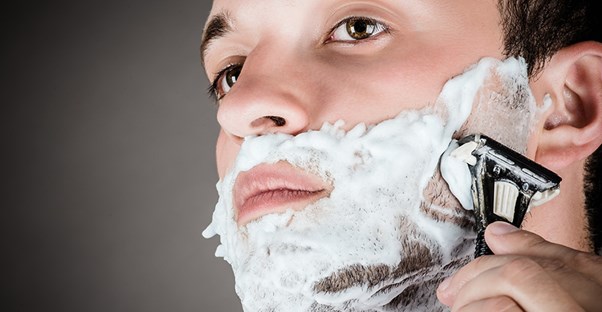Nothing can undo the delight of a fresh shave the way razor burn can. Caused by irritated skin and hair follicles, razor burn is red, itchy, or tender skin that erupts on a freshly shaved area. Small bumps (“razor bumps”) may appear as well. If you have dry or sensitive skin, you’re probably especially susceptible, but anyone can develop it. Here are a few home remedies for getting razor burn under control.
Natural Remedies
If you prefer the holistic route for cures, try applying one of these natural anti-inflammatories to the area affected by razor burn:
- Aloe vera: Rub it fresh from the plant straight on the skin. Dry, then rinse with cold water.
- Apple cider vinegar: Apply it with a cotton ball. Dry and rinse.
- Baking soda: For a bonus exfoliation, mix about one tablespoon of baking soda to a cup of water. Let a cotton ball soak up the solution, then rub it on the skin. Rinse after about five minutes.
- Black tea: Rub a moist, cool black tea bag straight onto your skin for a few minutes.
- Coconut oil: Coconut oil can be, well, oily, so only use a small amount and rub it into the skin. It contains antibacterial properties that will help prevent infections (like folliculitis) from developing as well.
- Cold compress: Apply a cold, wet washcloth or a few cloth wrapped ice cubes to sooth and reduce inflammation.
- Cucumber with yogurt: Blend a peeled cucumber with a couple tablespoons of plain yogurt. Apply it like a mask, and allow to sit for about 20 minutes. Rinse gently with warm water.
- Honey: Not only will honey provide a little extra moisture, but it also has antibacterial properties. Apply straight honey to the affected area, and let it dry before rinsing. Follow it up with a splash of apple cider vinegar.
- Tea tree oil: Tea tree oil has natural antibacterial and anti-inflammatory properties. Dilute it with water, olive oil, or even coconut oil. Rub it in; no rinsing necessary! Other essential oils that may help with razor burn include lavender, calendula, and chamomile oils.
- Witch hazel: This natural astringent can be applied with a cotton ball or sprayed onto a larger area (like the legs).
Any of these treatments can be used two to four times a day, as needed. Remember, before putting any new topical treatment on your skin to try a small amount over a small area to avoid any unexpected allergic reactions.
Over-the-Counter Cures
If you just want your razor burn gone and you don’t care how, several over-the-counter medications are available to you. Even aspirin, crushed up in water, can make a nice anti-inflammatory paste.
Some lotions and creams are made specifically for razor burn. Niacinamide, also found in anti-aging serums, is often found in these moisturizers. Hydrocortisone cream (useful for rashes, bug bites, and hemorrhoids) can reduce the itching and inflammation as well.
If your razor burn is getting worse, not going away despite home care, or larger bumps and pimples are developing, it might be time to check with a doctor to make sure no infection is present.




